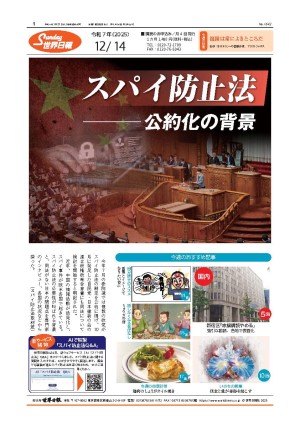奴隷廃止論者マッキンリー元大統領の像を標的にする左翼勢力 Leftists take aim at statue of abolitionist McKinley
カリフォルニア州のある町が、ウィリアム・マッキンリー元大統領の像を撤去しようとしている。これは、政治的に公正でない人物を公共の場から消し去ろうとする左翼の標的が、もはや奴隷所有者や(南北戦争時の)南部連合の将軍、人種隔離主義者にとどまらないことを示している。
南部各地で南部連合の記念碑が取り除かれているのに続き、カリフォルニア州アーケータ町議会は、マッキンリー第25代大統領の像を撤去することを投票で決めた。マッキンリーには公民権に関して立派な業績があるにもかかわらずだ。
何よりマッキンリーは南北戦争で奴隷制度を廃止するために戦った。オハイオ州知事としてカトリック教徒の州職員を解雇すべきだとの要求に抵抗し、大統領時代としては連邦政府ポストに記録的な数の黒人を起用した。
だが、活動家たちは、マッキンリーのインディアンへのひどい扱いと領土拡張政策を像撤去の根拠として挙げている。マッキンリーは、ドーズ法の改正である1898年カーティス法に署名した。これにより、インディアンの領土の部族政府は解体され、1907年にオクラホマが州になる道を開いた。
アーケータに長年住むデービッド・ラルーさんは、像の運命を住民投票に委ねるよう議会に請願している。ラルーさんは、全米に広がる聖像破壊の波について、放置していたら「この国の多くの記念碑や歴史的展示物が破壊されてしまう」と語った。
「どの世代にも将来の世代のために歴史を破壊する権利がないことは重要な事実だ」とラルーさん。「米大統領や米国史を傷つけ始めるのは、あしき前例となる。過去の遺物を取り除くことで歴史を『消す』という考えは誤りだ。この芸術作品を取り除いても何も変わらない。なぜなら歴史を変えることはできないからだ」
アーケータは、カリフォルニア州北部にある沿岸都市で、リベラルなことで知られる。2016年大統領選では、トランプ大統領は同市で、緑の党のジル・スタイン候補に11票上回っただけだった。
市議会は2月、4対1の投票で、マッキンリーの暗殺から5年後の1906年に建てられた8.5フィートの銅像を取り除くことを決めた。像撤去には6万5000㌦の費用が掛かる。
像撤去に賛成票を投じたソフィア・ペレイラ・アーケータ市長(民主党)は、マッキンリーを彼がかつて戦った南軍の兵士と同列視した。
ペレイラ氏は、ロサンゼルス・タイムズ紙に「マッキンリーと(南軍司令官の)ロバート・リーに違いはあるか。両者とも歴史的な苦痛を代表している」と語った。
アーケータに拠点を置く「先住民のための第7世代基金」の代表を務める活動家のクリス・ピーターズ氏は、マッキンリーについて、インディアンを「攻撃、レイプ、殺害」した「入植者植民地主義」の支持者だったと指摘した。
ピーターズ氏は、像に対する最近の抗議行動で「首にロープを掛けて引き倒せ」と叫んだ。
ポール・ピティノ・アーケータ市議会議員は、像撤去について「112年にわたる判断ミスを正すものだ」と述べた。
(4月10日付)
A California town’s effort to remove a statue of former President William McKinley shows that the leftist bent for erasing politically incorrect figures from the public square no longer is reserved for slave owners, Confederate generals and segregationists.
On the heels of the Confederate monument purge across the South, the town council of Arcata, California, voted to take down a statue of the 25th president, despite McKinley’s sterling record on civil rights.
Among other things, McKinley fought to abolish slavery in the Civil War, resisted demands to fire Catholic state workers as governor of Ohio and appointed a record number of blacks to federal positions as president.
But activists cite McKinley’s mistreatment of American Indians and policy of territorial expansion as grounds for the statue’s removal. McKinley signed the Curtis Act of 1898, an amendment to the Dawes Act, which broke up tribal governments in Indian territory and paved the way for Oklahoma to become a state in 1907.
David LaRue, a longtime Arcata resident petitioning the council to put the statue’s fate to a popular vote, said the wave of iconoclasm spreading across the country will “destroy a great deal of our nation’s monuments and historical displays” if left unchecked.
“It is an important fact that no one generation has the right to destroy history for future generations,” Mr. LaRue said. “It is a bad precedent to start tearing down U.S. presidents and U.S. history. The idea of ‘erasing’ history by removing the remnants of the past is wrong. Removing this piece of art will change nothing because you can’t change history.”
Arcata is a coastal city in Northern California with a liberal reputation. In 2016, President Trump bested Green Party candidate Jill Stein there by just 11 votes.
In February, the City Council voted 4-1 to get rid of the 8 1/2-foot-tall bronze statue, which was erected in 1906 - five years after the president’s assassination. Removing the statue would cost $65,000.
Arcata Mayor Sofia Pereira, a Democrat who voted with the majority to remove the statue, equated McKinley to the Confederate soldiers he once fought.
“Is there a difference between honoring McKinley and Robert E. Lee?” Ms. Pereira told the Los Angeles Times. “They both represent historical pain.”
Chris Peters, an activist who heads the Arcata-based Seventh Generation Fund for Indigenous People, said McKinley was a proponent of “settler colonialism” that “savaged, raped and killed” American Indians.
“Put a rope around its neck and pull it down,” Mr. Peters yelled at a recent protest of the statue.
Arcata Council member Paul Pitino said removing the statue was “correcting a 112-year-old error of judgment.”
April 10, 2018





